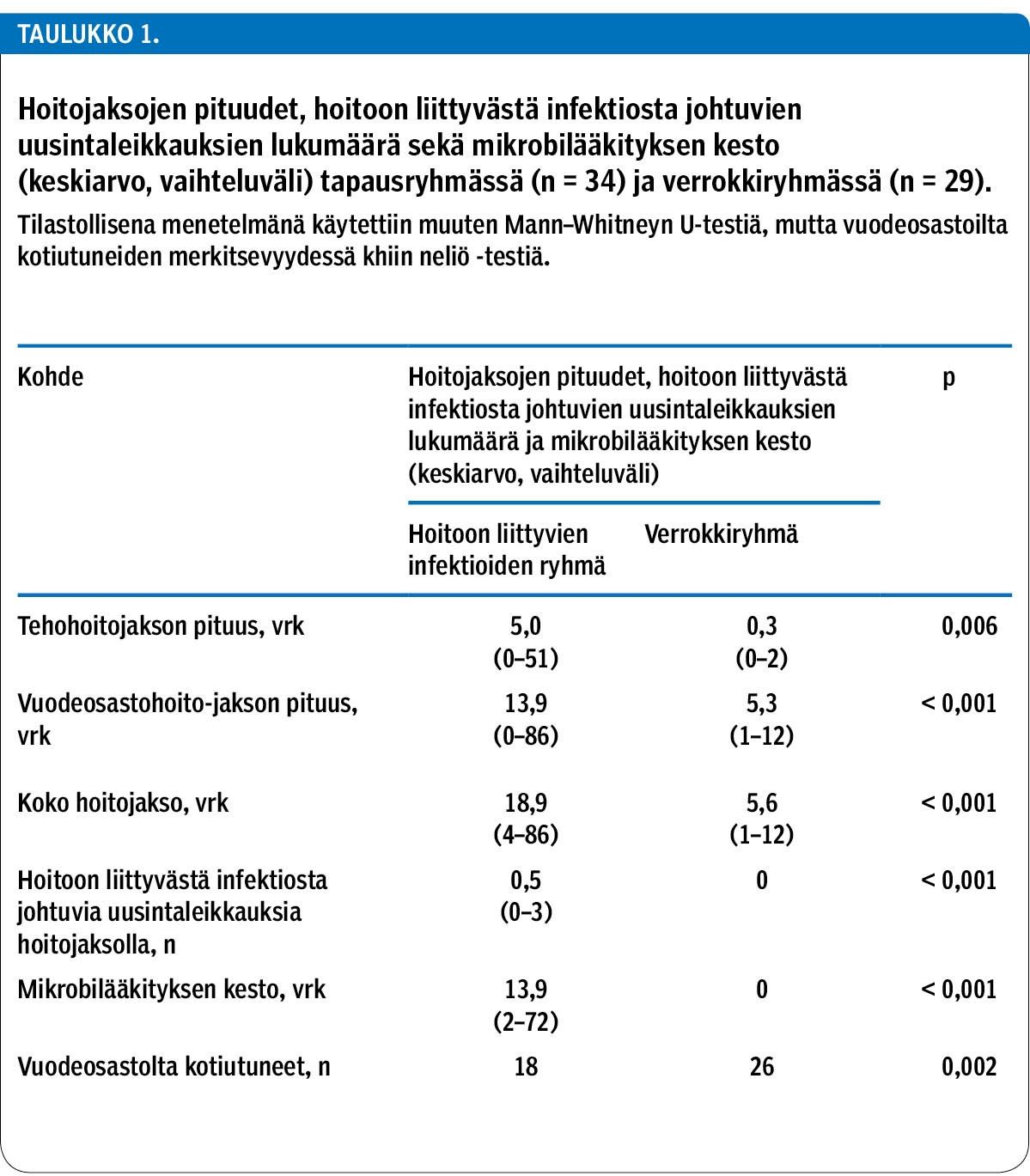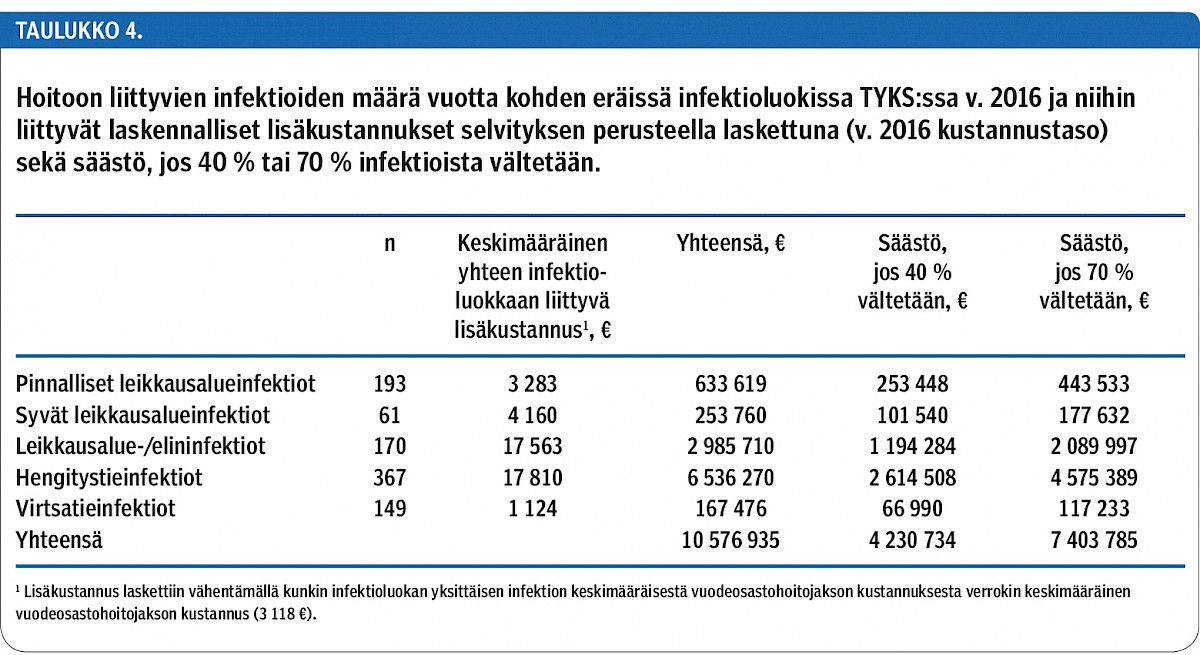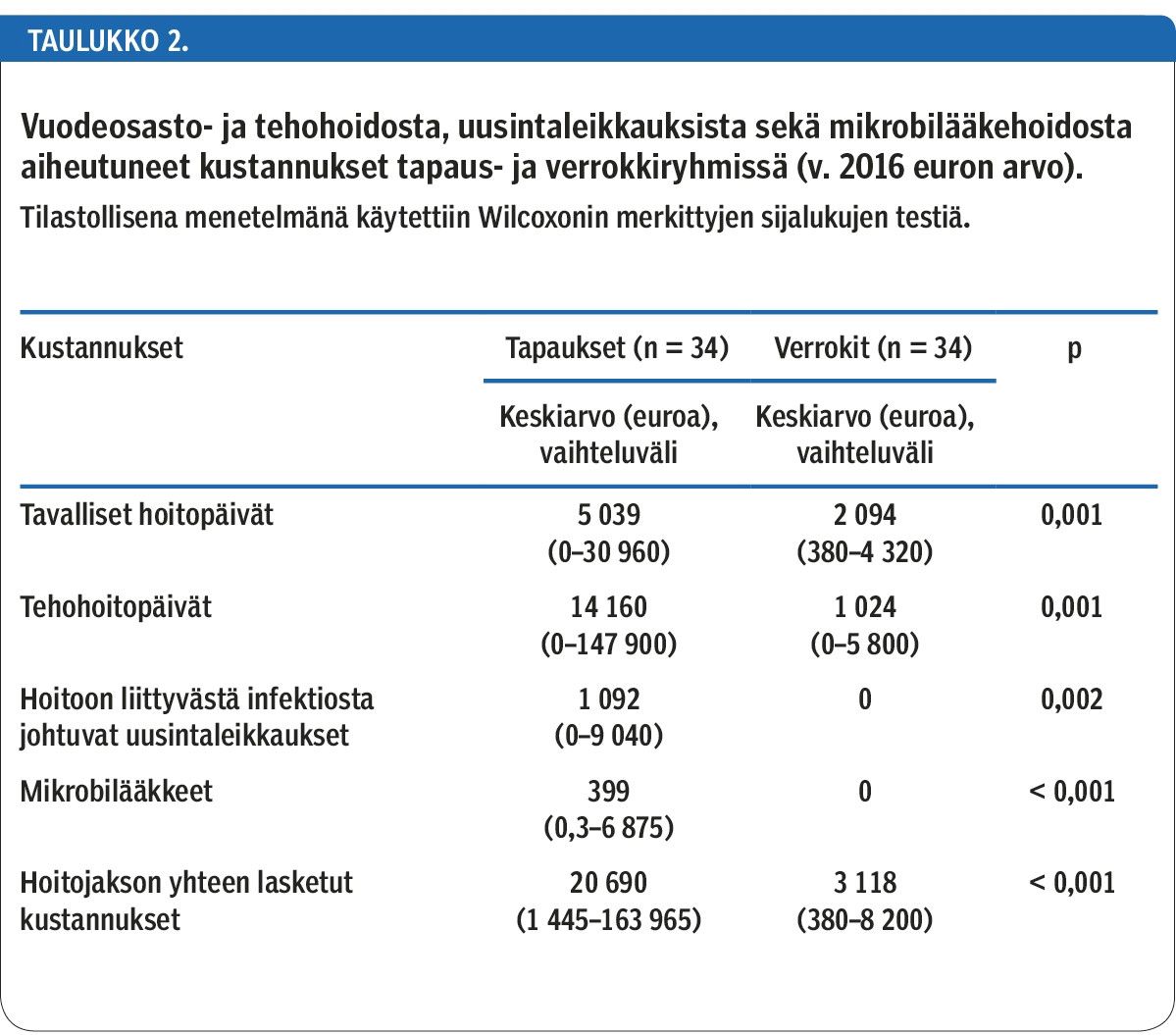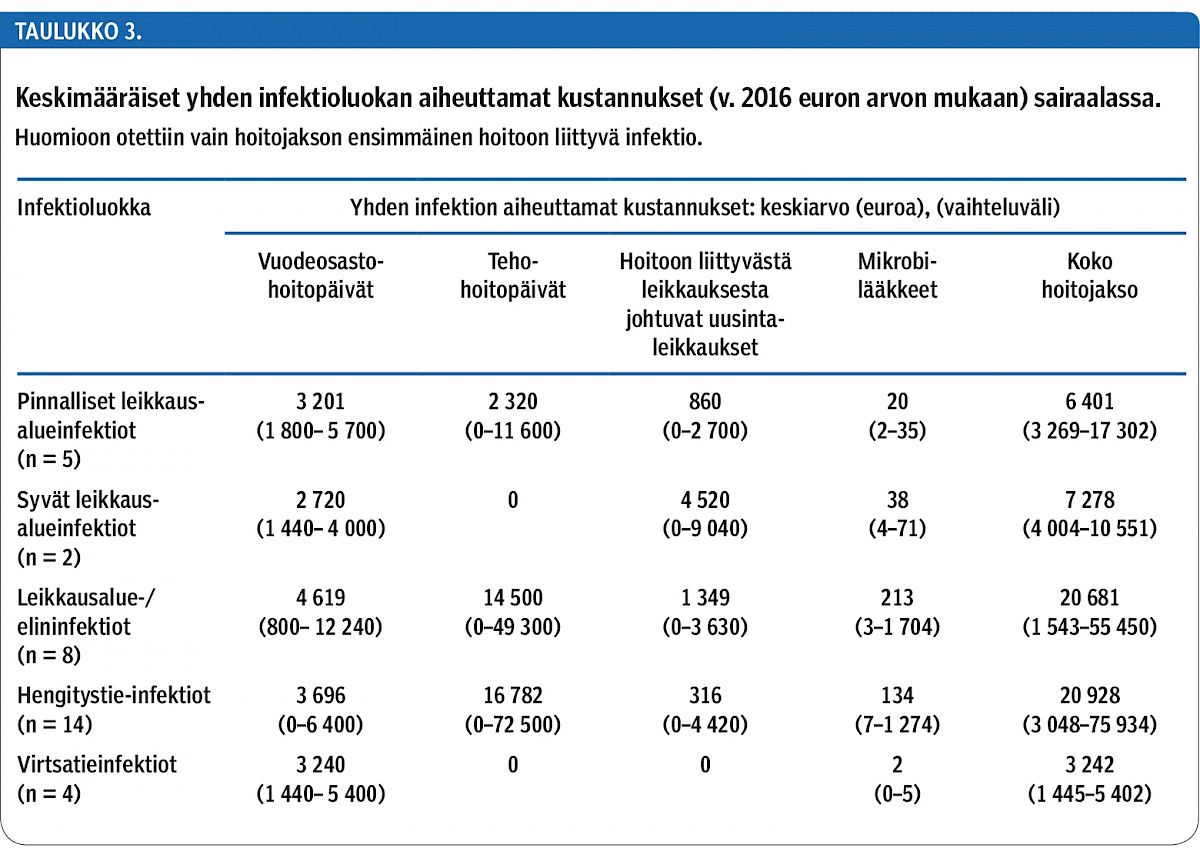Postsurgical health care associated infections cause significantadditional costs

Background Health care associated infections (HAIs) cause €195–492m additional health care costs and 700 patient deaths yearly in Finland. Our study aimed to estimate the costs of HAIs in Turku University Hospital.
Methods The HAI group (n = 34) included patients who had HAIs registered by a point prevalence study in the period 2012–2014 in operative departments in Turku University Hospital. The control group (n = 29) consisted of gender, age and procedure adjusted patients without HAI. Patient care days in wards or in the intensive care unit, antimicrobial treatment, operations and care after discharge were documented. Costs associated with ward and intensive care, antimicrobials and operations were calculated. Yearly additional costs due to HAIs were estimated.
Results The average number of patient care days in the HAI group was 2.6 times higher than in the controls (13.9 vs. 5.3 days, p < 0.001). There were 18 reoperations in 12 patients due to HAI. More than 50% of patients in the HAI group were treated in a health care facility after discharge. Average total costs were 6.6 times higher in the HAI group than in the control group.
Conclusions HAIs were associated with significant additional costs. We estimated that if only 40% of HAIs could be prevented, the yearly savings could be up to €4.2m in our hospital.

















